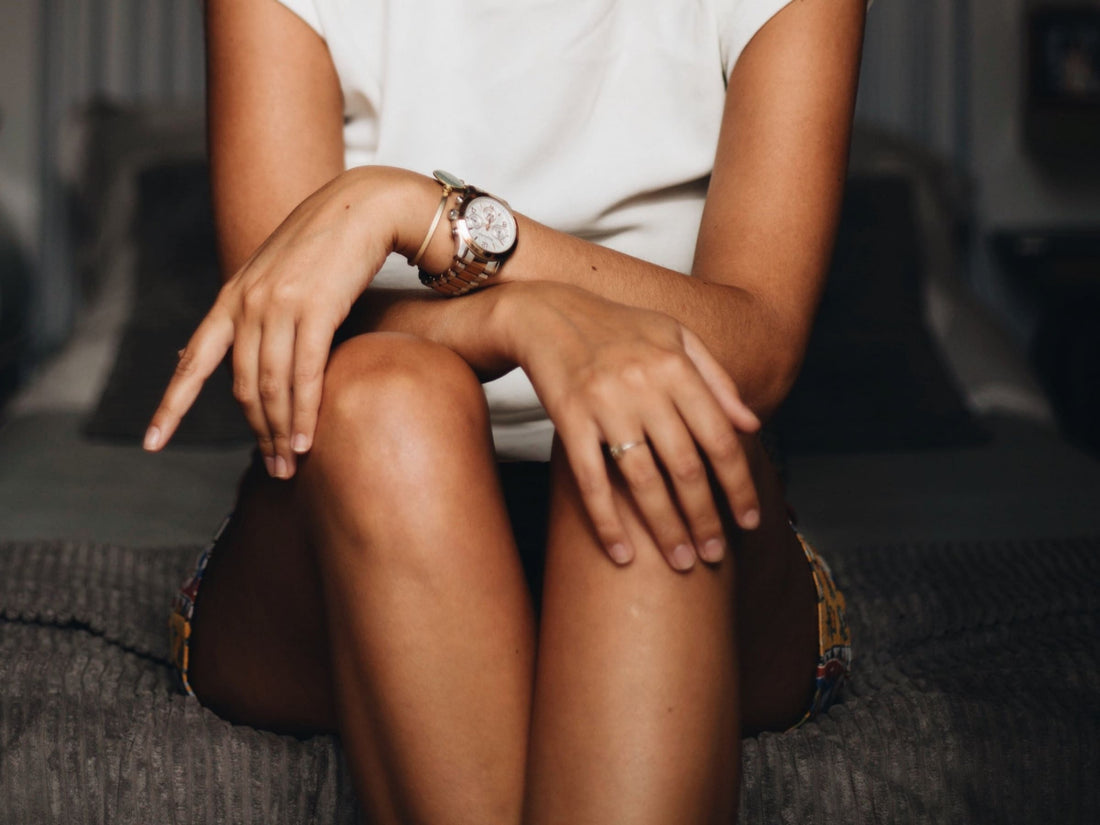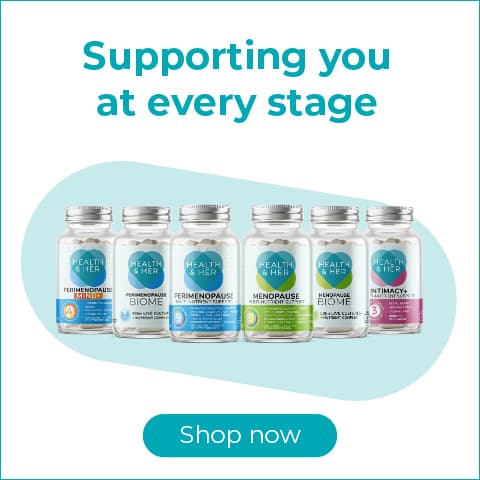There’s no skirting around it. Changes to flow around menopause can bring with them sudden, unexpected periods and heavier flows that can be hard to cope with. Urinary changes – or the so-called ‘sensitive bladder’ – are equally tricky. Thankfully our stylist Gilly Woo is as practical as she is chic, and has lots of helpful advice to to see you through, whether you’re worried about ‘oops moments’ or a surprise visit from Aunt Flo.
During perimenopause your periods can become unpredictable. They may be more frequent, less frequent, heavier, lighter, last longer or become shorter than you’re used to. So just when you thought you had your period routine sorted, Bam! You body throws a curveball and you need to adapt again. To make matters worse another delightful symptom we sometimes have to deal with is urinary incontinence. Joy!
Of course, it’s more important than ever to exercise regularly, look after yourself with great food and mindfulness, and to get anything you’re worried about checked out with your GP or gynaecologist, but I’m not an expert on all that.
What I am an expert on is fabrics, apparel, and practical solutions I’ve tried in real life, so let’s get started on what you can do and wear to make it easier to deal with leaks and flows.
Menstrual cups – the best thing ever?
Traditional period products like tampons and disposable towels are hard on the planet, and hardly gentle on your precious body. Most use harsh chemicals and non biodegradable materials and are individually wrapped in loads of nasty plastic. They are also hella expensive!
So tip number one is to make the switch to a menstrual cup immediately. Not only will these wonderful inventions save you money, (they last for up to ten years), they are better for the planet and much, much more healthy for you. If you experience vaginal dryness you will find a cup more comfortable than a tampon because a tampon absorbs any moisture and a cup just catches the flow. I personally have been using one for about 5 years and I love it. Since I invested in mine, cup technology has moved on considerably and many improvements have been made.
You can now buy menstrual cups with built in air valves making removal and correct insertion easier, as well as cups in loads of different shapes and sizes, so you’re bound to find the perfect cup for you. For instance, if you experience painful sex and vaginal tightening then a smaller cup may suit you better.
But there are even more benefits to making the switch to a cup… you can wear the exact same menstrual cup regardless of how heavy your flow is making it ideal for unpredictable periods. You can also wear your cup safely for 12 hours, much more convenient that the 4-8 hours you can wear a tampon.
You don’t have to worry about packing tampons or pads in you bag, just insert your cup in the morning and everything you need is with you throughout the day. I really can’t recommend them enough – if you haven’t yet joined the revolution yet, buy a cup today.
More sustainable sanitary wear
While we’re on the subject of better more sustainable sanitary wear, there has been another big revolution in the last two years. Period pants should be a staple in every menstruating women’s wardrobe. They are basically magic pants that wick away your period with no need for pads or liners.
I was sceptical at first, “What sorcery is this!” and I’m yet to invest in a pair myself but they are definitely on my wish list after reading the brilliant 5 star reviews of some of the products I’ve heard of. An absolutely genius invention, these pants look and feel just like everyday underwear but they have four special layers to keep you fresh and dry; moisture wicking cotton, an odour trapping lining, super absorbent fabric and a leak resistant barrier.
Period pants are washable, reusable and absolutely perfect for wearing during your period with a cup for extra piece of mind, or alone a few days before or after your period to prevent little leaks or if you’re not entirely sure when Aunt Flow might come a calling. Bear in mind periods and pee are two different things and sometimes require different products. However some brands do make pants especially designed for both kinds of leaks so you’re covered for every eventuality.
Pads and panty liners
If you prefer to wear a sanitary towel or panty liner for extra protection then it’s well worth looking into organic options. As well as being better for the environment they are kinder to your body.
Another idea is to look into reusable ones that can be thrown in the washing machine and used again and again. If you are feeling crafty you could even make your own. Check out YouTube for some easy to follow tutorials or buy from a small business on Etsy.
Don’t forget, sanitary towels, although sometimes cheaper than products specially designed for urinary incontinence, are not suitable for pee because they stay wet and can cause discomfort. Try a specially designed product instead. It will be worth it to spend a little more money and be comfortable, confident and dry all day.
‘Ooops moments’? Don’t accept them.
You do not have to accept urinary incontinence as an unavoidable consequence of getting older. There are so many things you can do to prevent and cure it. From exercise, pelvic floor trainers and supplements and cutting out certain things from your diet, right through to medication. Don’t suffer in silence, talk to your GP and take action. There’s lots of help to get started here on Health & Her – find links at the end of this article.
What if the worst does happen?
Even with all these precautions, occasionally accidents do happen, and if one does, don’t freak out! We’ve all been there, so try to laugh it off. Wear dark colours and choose quick drying fabrics for skirts and trousers, tie a coat or sweater around your waist, and carry a bag in front of you to get you to where you need to be to get changed.
Please bear in mind that it is not very likely that anyone around you will even notice. People are busy and self absorbed. Everyone is looking at their phone and no one is looking at your crotch. Believe me, you might feel like it’s the most obvious thing is the world, but the reality is your secret is safe and no one has noticed.
About Gilly Woo
Gilly Woo – known to her family as Gill Cockwell – began her sewing career at the tender age of six and was sketching designs and fashioning garments by the time she was ten. Since 2000, she has built a brand synonymous with quality, individuality and style – though most of all, she helps women find and express their most confident, fabulous selves. From dresses cut to dazzle for brides who use wheelchairs to red carpet looks featured in magazines and worn to The National TV Awards Gill’s portfolio is as diverse as the people she’s worked with. She’s an experienced stylist on magazine photo shoots and catwalk shows, has taught hundreds of people to sew, and has even stepped back in time on TV…
Read Gill’s full biography here
Products mentioned in this post can be found here:
View menstrual cups, organic sanitary products and period pants here
You might also be interested in…
Dr Shilpa McQuillan and Dr Deborah Lancastle – How to talk to your GP about menopause Gynaecologist Anne Henderson explains why periods get worse at menopause



